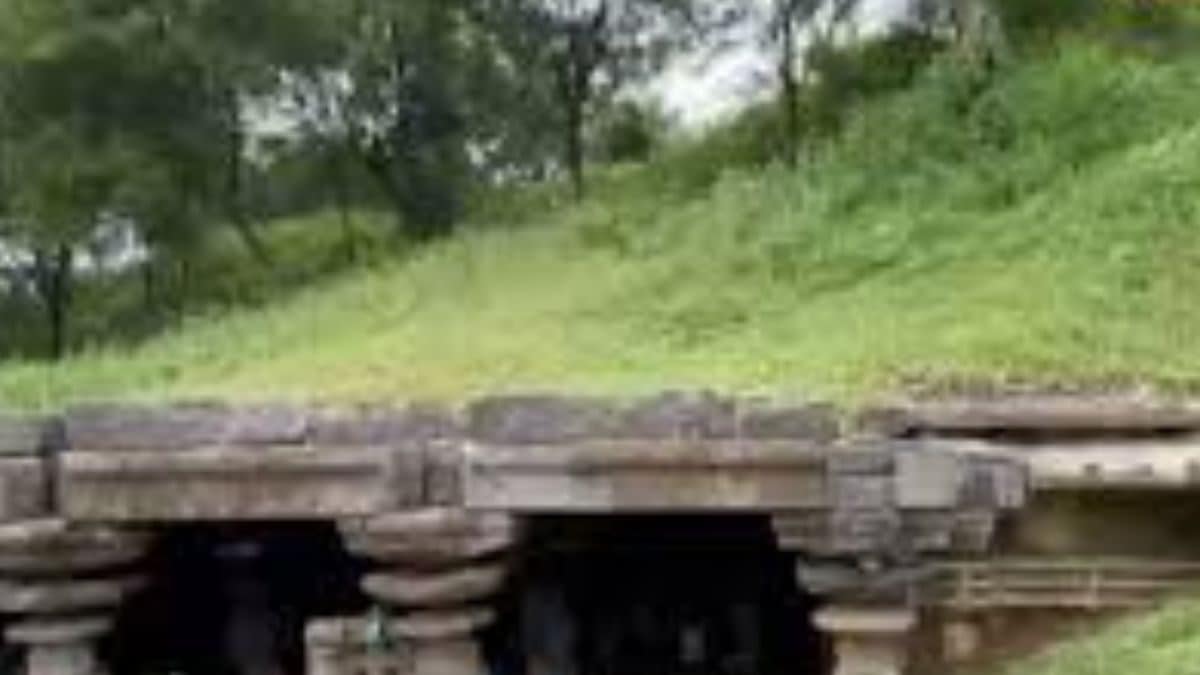The Kakatiya dynasty, known for their architectural prowess and deep religious devotion, left behind a rich tapestry of temples across Telangana. One such treasure, unearthed recently by the Archaeological Survey of India, is the underground Sree Trikuteshwara Swamy temple located in the Qila Warangal mud fort. This discovery sheds light on the hidden religious practices of the Kakatiya soldiers and highlights the unique underground architectural style of the period.
Unveiling the Secrets of an Underground Temple
The Sree Trikuteshwara Swamy temple, nestled beneath the Qila Warangal fort, stands as a testament to the Kakatiya’s devotion. Constructed during their reign, this underground temple was used by soldiers for worship and practiced the unique ritual of Sedah, adding an intriguing layer to the temple’s purpose. The temple’s discovery, during excavation of the fort, provides a peek into the intricate lives and spiritual beliefs of the Kakatiya warriors. The temple’s intricate carvings and subterranean architecture stand as a testament to the artistic talent and architectural skill of the Kakatiya builders.
An Underground Sanctuary
The location of the temple, hidden beneath the fort, reflects a deliberate strategy. It could have served as a secret place of worship, shielded from the eyes of enemies or a sanctuary for the soldiers during battles. The very act of building a temple underground speaks volumes about the importance of religion in the lives of these warriors. It also highlights the engineering marvels of the era, showcasing their expertise in building in challenging conditions.
Lakshmi Parvati Temple: A Glimpse of Lost Glory
The Kakatiya’s dedication to their deity is further underscored by the Lakshmi Parvati temple, another architectural gem discovered near the Kila Warangal palace. The temple, which was once adorned with idols of Lord Vishnu, Lord Surya and Shiva Lingam, was unfortunately damaged during Razakar militia excavations a few years ago. The remnants of this temple, however, reveal a grand past and inspire hope for a complete restoration.
A Monument to Lost Deities
The destruction of the temple idols by the Razakar militia stands as a stark reminder of the volatile history of the region. The presence of such temples further reinforces the religious significance of the Kakatiya era. Their devotion, evident in the numerous temples constructed, serves as a key to understanding their beliefs and values.
Nagunoor: A Village Embraced by Temples
The spiritual legacy of the Kakatiyas is further evidenced by the village of Nagunoor in Telangana. This village, known for its abundance of temples, boasts an impressive collection of over 400, some even buried underground. The existence of so many temples underscores the widespread influence of religion in the lives of the Kakatiya people. The village holds the rare honor of having a Lord Shiva temple with three Shiva Lingams, adding another dimension to its religious and historical significance.
Uncovering Buried History
The discovery of temples buried underground within Nagunoor unveils the complexities of historical events. It speaks of a possible period of upheaval, which prompted the burial of these sacred spaces. The effort put into preserving these temples in such a way reflects the respect the people held for their spiritual heritage. These buried temples await their resurrection, holding valuable secrets of the Kakatiya era.
A Legacy of Faith and Art
The discovery of temples like Sree Trikuteshwara Swamy and Lakshmi Parvati, combined with the abundance of temples in Nagunoor, paints a vivid picture of the deep religious devotion of the Kakatiya rulers. These temples stand as powerful reminders of their faith, dedication, and cultural influence. The magnificent architecture and intricate sculptures found in these temples not only reflect their craftsmanship but also contribute to Telangana’s rich cultural landscape.
Takeaway Points
- The discovery of temples in Qila Warangal and Nagunoor offer a valuable glimpse into the religious practices of the Kakatiya dynasty.
- The Kakatiya rulers constructed these temples with exceptional architectural skill, often building underground to create hidden sanctuaries.
- These temples stand as testaments to the Kakatiya’s strong belief in the divine, reflecting their deep commitment to their religious heritage.
- The preservation of these temples is critical for preserving the cultural history of Telangana and understanding the vibrant past of this region.
- Future efforts to restore and develop these temples will allow the world to further appreciate the rich architectural legacy and religious beliefs of the Kakatiya dynasty.




